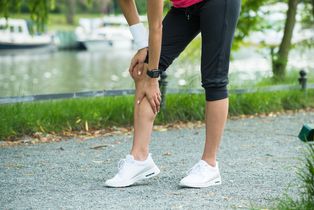
Articular cartilage injuries can occur as a result of traumatic or excessive use injuries where the cartilage is damaged or degraded, resulting in pain and swelling. The usual wear and tear of daily activities can cause articulate cartilage damage. This type of injury is common among athletes who put an enormous amount of pressure on their joints, leading to the wearing and breaking away of the cartilage, which can cause a painful catchy sensation, swelling and/or stiffness.
The articular cartilage is rather smooth and hard. It consists of collagen located on the articulating surface of the bone. This articulating surface is surfaced that come into contact with other bones. The function is to ensure smooth interaction between two bones of the joint. Therefore, any type of injury or lesions to the articular cartilage causes disruption in the flexibility of joint movements. Artificial cartilage does not have a direct blood supply, i.e. Extravascular. This is the reason why healing is slow after injury.
What are the Causes of an Articular Cartilage Injury?
Articular cartilage injury has many causes, some of which are listed below:
A knockdown on the knees: In the event that an individual falls down or meet with an accident that directly hits the knee or knee joint, this can damage the cartilage. Athletes and motorcyclists are more likely to encounter articular cartilage injury.
Deteriorating knee cartilage as a result of strenuous work or obesity. If a person is overweight or is often involved in heavy work such as weight lifting, he/she will probably suffer from articular cartilage injury or damage and this usually results in osteoarthritis.
Less movement than average: If an individual spends his/her time during the day sitting and engaged in some desk work instead of walking a lot, there is a good chance of getting the articular cartilage injury.
Articulate cartilage injury can occur as a result of other injuries that affect the knee. The anterior cruciate ligament is responsible for preventing the knee rotation. For this reason, ACL injuries are usually associated with injury on the medial and lateral surfaces of the femur and tibia. They become injured as a result of an ACL tear because of a twisting movement.
A strong impact on the knee joint, which has been found to be prevalent in sports that involve contact, such as a tackle, can lead to articular cartilage damage. These damages are usually associated with an injury of other structures in the joints, such as ACL and PCL tears, damage to medial and lateral meniscus among others.
Articular cartilage damage causes inflammation and pain in the knee joint. It is also known to improve the onset of osteoarthritis attack. Serious injury to the articular cartilage can cause fractures in the bones that are present underneath it. This condition is also called osteochondritis dissecans or osteochondral fractures.
Symptoms of an Articular Cartilage Injury
The most common symptoms of articular cartilage injury are moderate to severe pain in the knee joint. Below are some other symptoms associated with an articular cartilage injury.
• Sporadic pain in the knee joint.
• Swelling at the knee joint.
• Locking or catching of the knee may also occur because of the presence of loose bodies in the joint.
• Each type of knee movement causes a click sound.
Articular Cartilage Injury Treatment
Treatment for an Articular Cartilage Injury requires restoring the circulation and blood flow to the affected structures in your knee. Pain is caused when swelling, inflammation and decreased circulation generate a blockage, which causes blood flow to be interrupted or slowed. Treatment for this issue requires breaking up the accumulated fluids in your knee to allow for improved healing and quicker recovery.
Products recommended for symptoms of swelling, redness, pain, and inflammation, and if coolness makes your pain feel better:
Ice Substitute Poultice
Bruise Relief Liniment
Muscle Therapy Massage Oil
Products recommended when swelling and inflammation are gone, but you still feel pain, stiffness, weakness, and/or sensitivity in cold and damp weather, and if heat makes your pain feel better:
Pain Relief Liniment
Tendon and Ligament Poultice
Muscle Therapy Massage Oil





